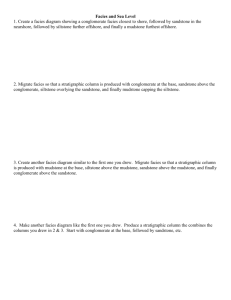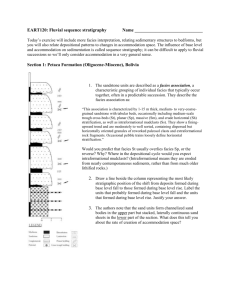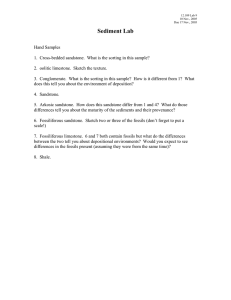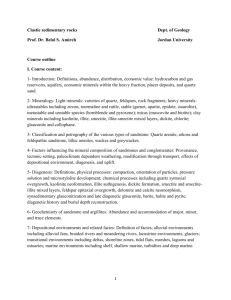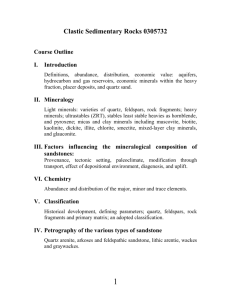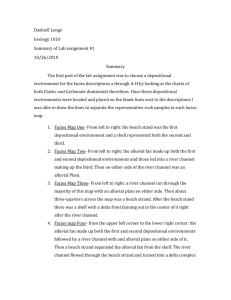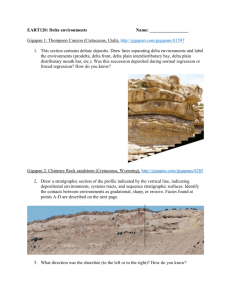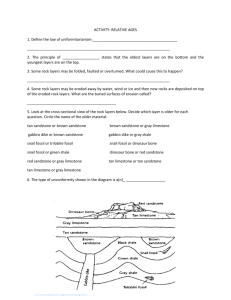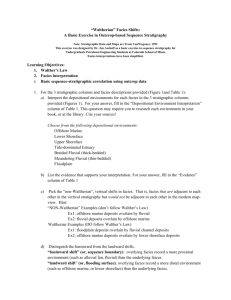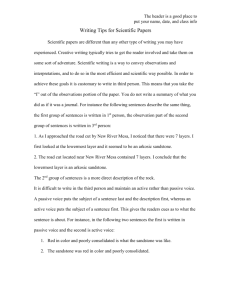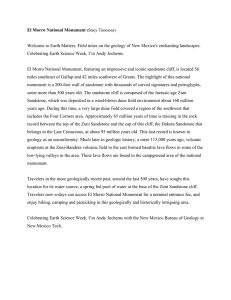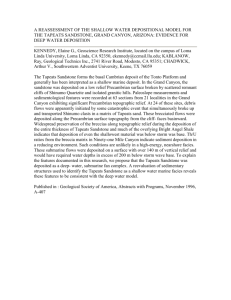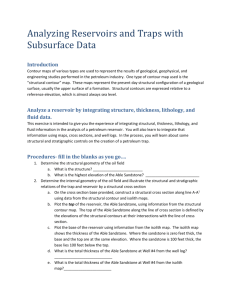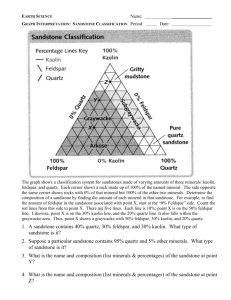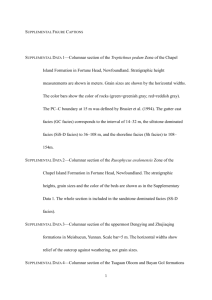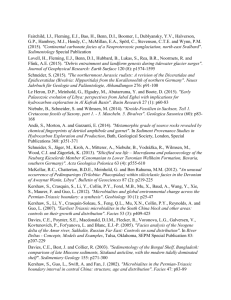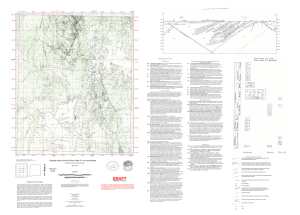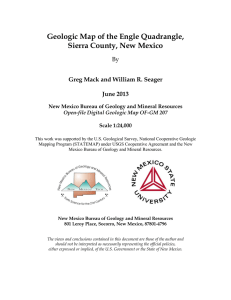310FieldTripPaper
advertisement
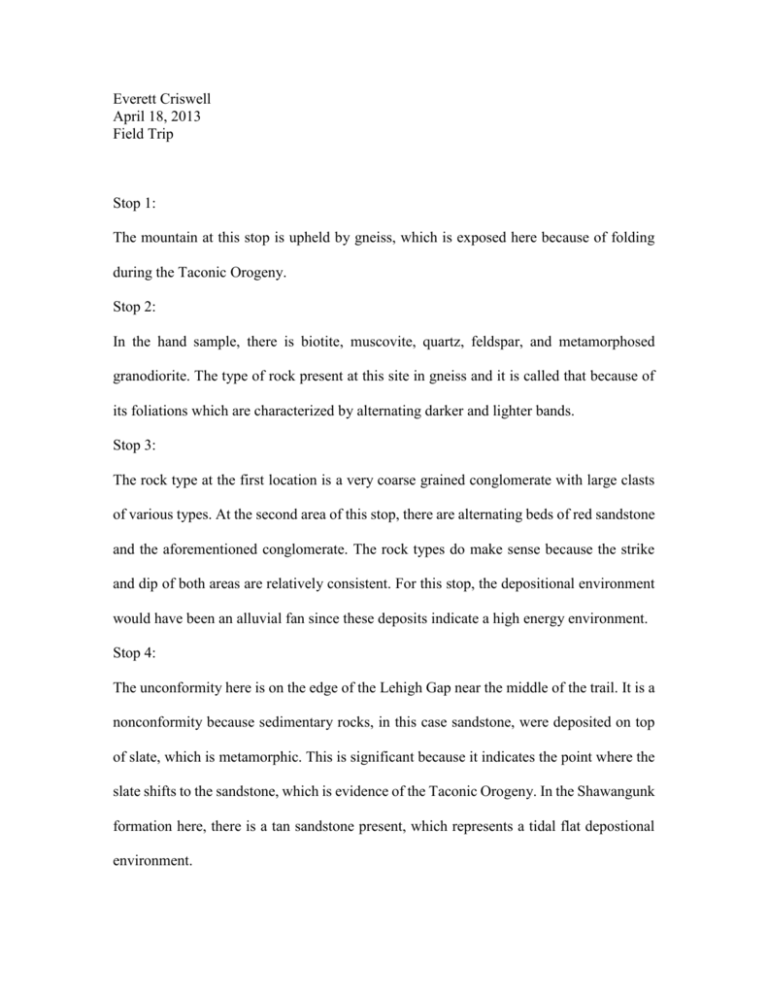
Everett Criswell April 18, 2013 Field Trip Stop 1: The mountain at this stop is upheld by gneiss, which is exposed here because of folding during the Taconic Orogeny. Stop 2: In the hand sample, there is biotite, muscovite, quartz, feldspar, and metamorphosed granodiorite. The type of rock present at this site in gneiss and it is called that because of its foliations which are characterized by alternating darker and lighter bands. Stop 3: The rock type at the first location is a very coarse grained conglomerate with large clasts of various types. At the second area of this stop, there are alternating beds of red sandstone and the aforementioned conglomerate. The rock types do make sense because the strike and dip of both areas are relatively consistent. For this stop, the depositional environment would have been an alluvial fan since these deposits indicate a high energy environment. Stop 4: The unconformity here is on the edge of the Lehigh Gap near the middle of the trail. It is a nonconformity because sedimentary rocks, in this case sandstone, were deposited on top of slate, which is metamorphic. This is significant because it indicates the point where the slate shifts to the sandstone, which is evidence of the Taconic Orogeny. In the Shawangunk formation here, there is a tan sandstone present, which represents a tidal flat depostional environment. Stop 5: The first facies here is composed of interbedded sandstones and mudstones of a gray red color. The second facies here was a gray to pink sandstone, which then turned into a planar bedded pebbly sandstone for the third facies. The fourth facies present here is a gray conglomerate with many large quartz clasts. The final facies is a coal bed. The depositional environments represented here are a flood plain, an alluvial fan, a meandering river, a braided river, and a swamp. Over time, the floodplain here regressed into the swamp. The shear disturbance is some of the gray shales present at this site are the result of tectonic activity here. The climate became much warmer in the area, which produced the regression mentioned above.
